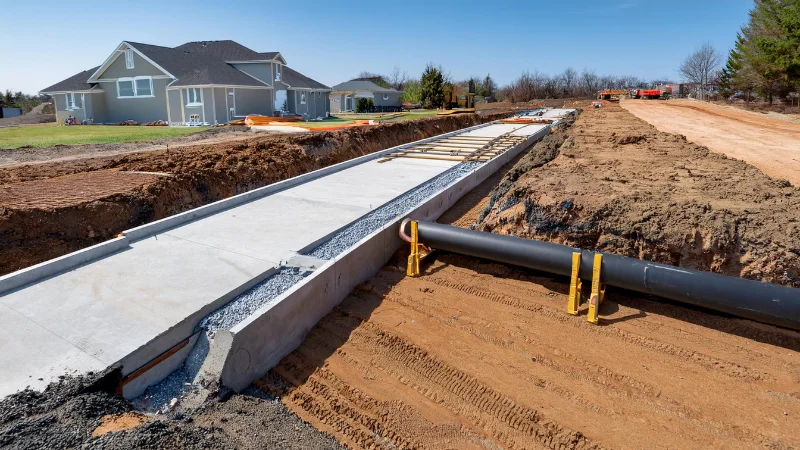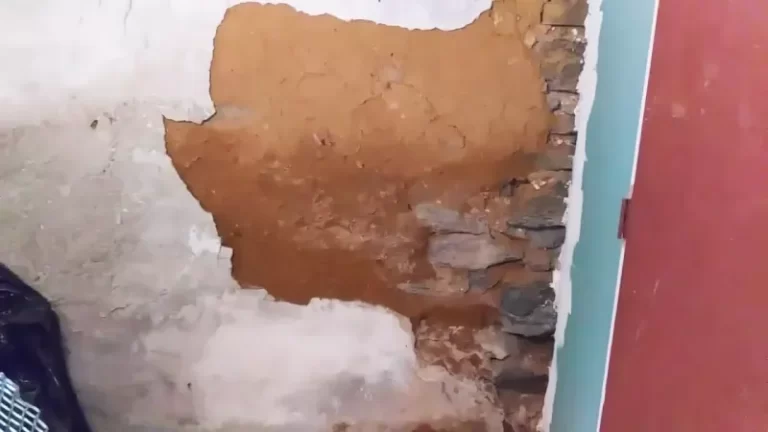Constructing a Driveway Over a Gas Line: Considerations and Best Practices
When planning to construct or renovate a driveway, various factors must be considered to ensure safety, functionality, and compliance with local regulations. One critical aspect is the presence of underground utilities, particularly gas lines.
Building a driveway over a gas line requires careful planning and adherence to specific guidelines to avoid potential hazards and ensure the longevity of both the driveway and the gas infrastructure. This article explores the key considerations, potential risks, and best practices for constructing a driveway over a gas line.
You'll Learn About
Understanding Gas Lines and Their Importance

What Are Gas Lines?
Gas lines are underground pipes that transport natural gas from distribution points to residential, commercial, and industrial buildings. These pipelines are crucial for delivering energy used for heating, cooking, and other applications.
Importance of Gas Line Safety
The safety and integrity of gas lines are paramount due to the flammable and potentially explosive nature of natural gas. Any damage or disruption to these pipelines can lead to serious safety hazards, including gas leaks and explosions, posing risks to life and property.
Key Considerations Before Building Over a Gas Line
Locating the Gas Line
Before any construction begins, it is essential to locate all underground utilities, including gas lines. This step ensures that construction activities do not inadvertently damage these utilities.
How to Locate Gas Lines
- Contact Utility Companies: Reach out to local utility companies to request a detailed map of underground utilities.
- Call 811: In many regions, dialing 811 connects you to a service that marks underground utilities for free.
- Hire Professionals: Professional utility locators can provide accurate information on the location and depth of gas lines.
Local Regulations and Permits
Construction over or near gas lines is often regulated by local building codes and utility companies’ guidelines. Securing the necessary permits and adhering to regulations is critical.
Common Regulations
- Minimum Clearance Requirements: Regulations typically specify a minimum clearance distance between the gas line and the driveway surface.
- Inspection Requirements: Inspections by utility companies or local authorities may be required before, during, and after construction.
- Permit Acquisition: Permits must be obtained to ensure that all construction activities comply with safety standards and local codes.
Construction Materials and Techniques
The choice of construction materials and techniques can impact the safety and durability of a driveway built over a gas line.
Material Considerations
- Flexible Materials: Using materials like asphalt, which can accommodate slight movements, can reduce the risk of damaging the gas line.
- Load Distribution: Reinforced concrete can distribute the weight of vehicles more evenly, minimizing pressure on the gas line.
Construction Techniques
- Excavation Practices: Careful excavation around the gas line is crucial to prevent accidental damage. Hand digging or using soft digging methods near the gas line can be safer alternatives to mechanical excavation.
- Protective Coverings: Installing protective coverings or sleeves over the gas line can provide an additional layer of protection during construction.
Potential Risks and Mitigation Strategies
Risks of Building Over Gas Lines
Damage During Construction
Accidental damage to gas lines during construction can lead to gas leaks, which are hazardous and costly to repair.
Settling and Shifting
Over time, soil settling and shifting can exert pressure on gas lines, potentially causing cracks or leaks.
Heavy Loads
The weight of vehicles on the driveway can compress the soil and impact the gas line, especially if the line is not buried deeply enough.
Mitigation Strategies
Use of Warning Tape
Placing warning tape above the gas line during construction can alert workers to the presence of the gas line and prevent accidental damage.
Depth Assessment
Ensuring that the gas line is buried at a sufficient depth, typically 24 inches or more below the surface, can protect it from the weight and impact of the driveway.
Regular Inspections
Conducting regular inspections of the gas line and driveway can help identify potential issues early and allow for timely repairs.
Best Practices for Constructing a Driveway Over a Gas Line
Planning and Design
Professional Consultation
Consulting with engineers, utility companies, and construction professionals during the planning phase can ensure that all safety measures are considered and incorporated into the design.
Detailed Mapping
Creating detailed maps of all underground utilities, including gas lines, can help in planning the driveway layout and construction activities.
Construction Phase
Marking and Identifying Gas Lines
Clearly mark the location of gas lines throughout the construction site to keep workers aware and cautious during the excavation and building process.
Adopting Safe Excavation Techniques
Use hand tools or non-invasive methods when digging near the gas line. Mechanical digging should be conducted with extreme care and under close supervision.
Post-Construction Considerations
Ongoing Monitoring
Regularly monitor the driveway and surrounding area for signs of settling, cracks, or other issues that might indicate underlying problems with the gas line.
Maintenance
Maintain the driveway to ensure it remains in good condition, addressing any issues promptly to avoid impacting the gas line beneath.
Detailed Table: Key Considerations and Best Practices for Driveway Construction Over Gas Lines
| Aspect | Description | Best Practices |
|---|---|---|
| Locating Gas Lines | Identify the exact location and depth of gas lines before construction | Use utility location services, call 811, hire professionals |
| Regulations and Permits | Ensure compliance with local regulations and obtain necessary permits | Check local codes, adhere to clearance requirements, schedule inspections |
| Materials and Techniques | Choose appropriate materials and construction methods to protect the gas line | Use flexible materials like asphalt, reinforced concrete, hand digging, and protective coverings |
| Risk Mitigation | Implement strategies to prevent damage and ensure safety | Use warning tape, assess gas line depth, conduct regular inspections |
| Planning and Design | Plan the driveway layout considering the location of gas lines | Consult professionals, create detailed maps |
| Construction Phase | Follow safe practices during excavation and construction | Mark gas lines, use safe excavation techniques, supervise mechanical digging |
| Post-Construction | Regular monitoring and maintenance to ensure the integrity of the driveway and gas line | Regular inspections, timely repairs, maintaining driveway condition |
How close to a gas well can you build a house?
Building a house near a gas well involves several considerations related to safety, legal requirements, and environmental factors.
The distance a residence can be built from a gas well depends on local, state, and federal regulations, as well as the type of gas well in question. Natural gas wells are subject to strict oversight to ensure public safety, environmental protection, and the efficient operation of gas extraction.
Regulatory Setbacks and Safety Zones
The distance between a gas well and a residence is primarily dictated by setback requirements. These are minimum distances established by government agencies to minimize risk from gas well operations and protect human health and property.
Setback distances vary by jurisdiction but typically depend on the type of gas well, its depth, and the well’s production activity. For instance:
- Conventional Gas Wells vs. Hydraulic Fracturing (Fracking) Wells: Wells that use fracking may have stricter setback requirements because of the additional equipment, hydraulic pressure, and potential risk factors involved in their operation.
- State Regulations: In the United States, individual states determine their own setback distances, which can range from as little as 300 feet to over 1,000 feet from a gas well, depending on the level of risk posed by the operation.
Some states, such as Pennsylvania, Texas, and Colorado, mandate setbacks that range from 500 to 1,500 feet or more from residential homes. These requirements are in place to limit risks associated with gas migration, accidental leaks, well blowouts, or operational hazards.
Factors That Influence the Minimum Distance
Even when general setback distances are defined, specific factors may affect how close a house can be built to a gas well:
- Well Type and Activity: Gas wells in active production or those undergoing drilling or hydraulic fracturing are considered higher-risk than dormant wells. A gas well’s activity level can influence setback determinations.
- Land Use and Population Density: If an area is heavily populated, the setback distance may be increased to ensure public safety. Conversely, in sparsely populated areas, distances might be shorter.
- Local Zoning Requirements: Local municipalities may impose stricter setback guidelines than those required at the state or federal levels.
- Environmental and Geographical Conditions: Proximity to fault lines, unstable soils, or sensitive ecological areas may also affect the appropriate distance.
Potential Hazards of Living Near Gas Wells
Living too close to a gas well poses risks, such as:
- Gas Leaks: Gas wells can experience leaks, either from natural causes, equipment malfunctions, or human error. Prolonged exposure to leaking natural gas can lead to health issues or explosion risks.
- Earthquakes and Seismic Activity: Certain fracking operations have been linked to increased seismic activity, which could endanger homes located nearby.
- Operational Risks: Gas wells involve drilling, hydraulic pressure, and other technical operations. These processes carry risks of accidents, such as gas blowouts, spills, or fires.
These risks underscore why setback distances are vital for ensuring safety and peace of mind for homeowners and communities.
Permits and Approvals
Before constructing a home near a gas well, developers or homeowners must obtain the necessary permits. These permits ensure that construction projects adhere to setback rules, land use regulations, and environmental protections. A permit process will typically involve:
- Environmental Impact Assessments: Ensuring that construction won’t harm surrounding ecosystems or water supplies.
- Safety Assessments: Analyzing risks associated with proximity to gas wells.
- Community and Regulatory Review: Permits must often pass through state or local regulatory bodies for review and approval.
Additional Considerations
If you’re planning to live near a gas well, you should consider additional practical issues beyond legal setbacks:
- Noise and Air Quality: Gas well operations can produce noise and emissions that may affect nearby homes. Noise reduction and air quality monitoring may be necessary.
- Property Value: Homes located near gas wells may experience fluctuations in property value due to noise, safety concerns, or nearby gas extraction activity.
The distance you can build a house from a gas well is largely dependent on a mix of federal, state, and local regulations, as well as well type and operational activity. While setback distances will vary by jurisdiction and situation, prioritizing safety remains the overarching goal.
Sometimes, you need to seal black gas pipes.
Conclusion
Constructing a driveway over a gas line is a complex task that requires careful planning, adherence to safety regulations, and ongoing maintenance.
By understanding the location and depth of gas lines, obtaining necessary permits, using appropriate construction materials and techniques, and implementing effective risk mitigation strategies, homeowners and contractors can ensure the safety and durability of both the driveway and the underlying gas infrastructure.
Regular inspections and maintenance play a crucial role in detecting and addressing potential issues early, thereby preventing costly and dangerous problems. Through thoughtful design and vigilant care, a driveway over a gas line can be both functional and safe.

